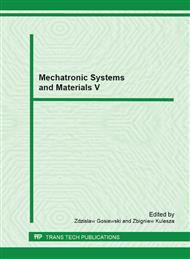p.472
p.478
p.484
p.490
p.496
p.502
p.508
p.514
p.518
Surfaces Modification of Al-Cu Alloys by Plasma-Assisted CVD
Abstract:
Aluminum-copper alloys (Al-Cu) are nowadays widely used in various applications, mainly in automotive and aviation industry, because of their unique properties such as high strength, low density and good corrosion resistance. However, usages of aluminum alloys are partially limited due to their reduced hardness, wear resistance and poor tribological parameters. Desired useful parameters can be improved by application of PA CVD technology. This work presents the results concerning determination and analysis of the structure and the selected properties of the modified surfaces of Al-Cu alloys (2xxx series) that were prepared using plasma assisted MW CVD (Micro-Wave Chemical Vapour Deposition) method. To ensure effectiveness of the substrate modification process, the covered surface was subjected to pre-treatment with argon plasma and/or nitriding process. In conclusion, the research has confirmed that the wear resistance of the Al-Cu alloy can be successfully modified by application of MW CVD technique. The obtained results can serve as a basis in the design of the technology of a-Si:C:N:H layers for diverse applications.
Info:
Periodical:
Pages:
496-501
Citation:
Online since:
March 2013
Authors:
Price:
Сopyright:
© 2013 Trans Tech Publications Ltd. All Rights Reserved
Share:
Citation:


